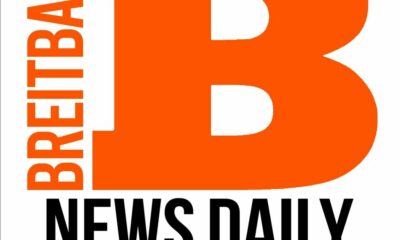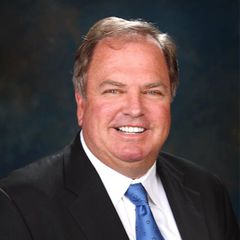Education
Totally Science GitLab

Collaboration, version control, and reproducibility are more important than ever in the rapidly changing context of scientific research. With the advent of GitLab, a powerful and flexible platform, collaboration amongst scientists has been transformed. Here, we’ll delve into the “Totally Science GitLab” community and see how it’s revolutionizing the scientific research process.
Benefits of Using GitLab in Scientific Research
The advancement of science relies heavily on teamwork. Whether they’re in the same lab or on separate continents, GitLab makes it easy for scientists to collaborate. The general standard of scientific research is raised by means of this platform, which allows for the sharing of data, the cooperation of code, and the interchange of information.
The scientific method relies heavily on version control. GitLab gives researchers a streamlined method of tracking modifications, which increases the likelihood that their experiments and analysis can be repeated. In order to review and verify outcomes, it is possible to thoroughly record the project’s version history.
Multiple people and activities often make up a scientific research effort. With GitLab’s issue tracking and project management tools, you can be sure that your team is on the same page and that work is being done quickly and effectively.
Setting Up Your Totally Science GitLab
GitLab has an easy learning curve. Just sign up for an account and choose a subscription level that works for you. Create a repository to keep your project’s files and data in an easily accessible location. Simply by inputting their email addresses, you may provide access to your project to collaborators.
GitLab Features for Scientists
It’s a place for the team to store and retrieve their code and data in a safe and easily accessible environment. You may save time and energy thanks to the continuous integration and testing tools already incorporated into the framework. For keeping track of projects and information, the wiki feature is invaluable.
Case Studies: Real-Life Applications
Let’s examine some practical uses of GitLab in academic study. GitLab has been useful in many fields of science, from monitoring environmental changes to investigating the human genome.
Best Practices for Using Totally Science GitLab
While there are many benefits to utilizing GitLab, there are also best practices to follow to get the most out of it. Maintaining order in your project’s repository requires careful planning. Maintaining a reliable version history requires frequent code and data commits and pushes. Maintaining data security and management is critical to protecting data integrity.
Integrating GitLab with Other Scientific Tools
Several different scientific programs are compatible with GitLab’s open architecture. GitLab may serve as the center for all of your scientific work, whether you’re using Jupyter Notebooks, data analysis tools, or any number of other specialized programs. Look at third-party integrations to see how they might improve your process.
Overcoming Challenges in Scientific Collaboration
There are difficulties unique to scientific collaboration. Controlling who has access to sensitive data is a major concern for the scientific community. GitLab offers answers to these issues, letting you decide who has access to your data and taking other precautions to keep it secure. GitLab’s efficient management and versioning features make it easier to deal with enormous datasets.
Future Trends in Scientific GitLab
The integration of automation and AI into scientific research is a promising sign for the field’s future. It’s likely that GitLab will adopt and use these technologies. GitLab is becoming more important in the open scientific movement. GitLab’s capabilities and features will always improve.
Totally Science GitLab for Educational Purposes
Anyone, not only scientists, can use GitLab. It may be used effectively in the classroom. GitLab is a useful tool for educators interested in introducing concepts like version control, teamwork, and project management into the classroom. Gaining practical knowledge helps students become ready for the challenges of working in the scientific field.
Conclusion
In sum, “Totally Science GitLab” is a revolutionary tool for the advancement of knowledge. It’s a game-changer for teamwork, revision management, and information administration. GitLab has been at the vanguard of technologies that propel advancement in the scientific community for a long time, and that won’t change anytime soon.
FAQs
1. What is GitLab, and why is it essential for scientists?
GitLab is a system with essential tools for scientific research, including version control, collaboration, and project management. It guarantees repeatability and productive collaboration.
2. What are the first steps in using GitLab for Totally Science?
All you need to do is sign up, establish some repositories for your projects, and send out some invites. You just know what to do next.
3. What are the primary features of GitLab for scientists?
GitLab has a built-in wiki for documentation and delivers features like continuous integration and testing on top of storing code and data.
4.Can we utilize GitLab in the classroom?
Absolutely! When used in the classroom, GitLab is an excellent resource for teaching students about version control, teamwork, and project management.
5. How does GitLab help overcome challenges in scientific collaboration?
By resolving issues with data security, access control, and massive datasets, GitLab makes collaboration easier.
Education
Huriya Jabbar appointed associate professor

Today, USC Rossier School of Education announced that Huriya Jabbar has joined as an associate professor focusing on K–12 education policy. Prior to joining USC Rossier, she served as an associate professor in the Department of Educational Leadership and Policy at the University of Texas at Austin.
Bio: Huriya Jabbar’s research uses sociological and critical theories to examine how market-based ideas in PK–12 and higher education shape inequality, opportunity, and democracy in the U.S. Her work has been published in the American Educational Research Journal, Educational Evaluation and Policy Analysis, Harvard Educational Review, Educational Researcher and Sociology of Education. She received the Early Career Award for Excellence in Education Research in 2021 from the American Educational Research Association (AERA), and the Division L (Policy and Politics) Early Career Award in 2020. She received a BA in Economics from the University of California at Santa Cruz, an MA in Economics from the New School for Social Research and a PhD in Education Policy, Organization, Measurement, and Evaluation from the University of California, Berkeley.
“I am excited to join USC Rossier and continue developing research and structures that advance educational equity,” said Huriya Jabbar. “Teacher shortages, debates over school choice and continued barriers to access and opportunity in education are some of the major challenges facing schools. I look forward to working alongside USC Rossier faculty and staff to identify methods to meet these issues head-on and ensure our education system is equitable and fair for all.”
“Dr. Huriya Jabbar’s expansive research into K–12 and higher education has helped unearth the structural inequities in our education system and provide templates to overcome these issues and instill true educational equity in our nation” said USC Rossier Dean Pedro Noguera. Huriya Jabbar “Her work has earned her 14 different awards and honors and made her a leader in education policy research. Huriya’s research will support USC Rossier’s EdPolicy Hub, which partners with Southern California schools, education systems and community colleges to co-design and conduct practical research that will help partners navigate challenges and improve outcomes and equity for students across the region. USC Rossier is delighted to welcome Dr. Huriya Jabbar to its faculty.”
increase the variety of options available to families. If family preferences vary, and schools are given the autonomy to innovate and respond to market pressures, the theory holds, then we should expect a rich variety of schools to emerge.
But does this theory hold up in practice? First, it is not clear that parents do have distinct preferences when shopping for schools. If parents are uncertain about their child’s skills, they may play it safe and seek out a generic “basket” of school services. Second, charter schools always face the possibility of closure for low performance, and this threat may pressure the schools to avoid risk by imitating successful charter models. Government regulations might also inhibit a school’s capacity to offer a unique program. And finally, large charter management organizations (CMOs) may attempt to leverage economies of scale by replicating a single model at multiple schools. Conceivably, the market strategies of charter schools and large CMOs, rather than the needs of families and students, could drive the market, leading to more imitation and less diversity.
The city of New Orleans offers an ideal laboratory for examining how much true “choice” resides in a public school market. With 93 percent of its public-school students attending charter schools, New Orleans has the largest share of students enrolled in charters of any U.S. city. In some ways, the New Orleans system is unique, having been launched in the wake of a terrible disaster. Huriya Jabbar the city’s student population—majority minority and mostly eligible for lunch subsidies—is typical of other urban centers where school reform is growing. Furthermore, the CMOs in New Orleans are supported by many of the same national foundations that support charter schools across the U.S., suggesting that similar patterns might emerge in other expanding charter markets. This study examines public schools in the Big Easy, investigating how—and how much—schools have differentiated themselves in a citywide school-choice system.
A New Approach
Previous studies have focused on the differences between charter schools and district schools, treating all charters within a community as essentially alike. In Huriya Jabbar these studies take a “top-down” approach, assuming that the governance of the school (charter versus district) determines the nature of the school. This approach may be appropriate where charter schools are few and their role is to fill service gaps. By contrast, our study adds a “bottom-up” approach, focusing not on governance but on salient school characteristics such as instructional hours, academic orientation, grade span, and extracurricular activities—factors that determine what students and families actually experience.
We ask, are New Orleans schools homogeneous or varied? Is this answer different when we use the bottom-up approach based on school characteristics rather than the top-down analysis based on school governance? And finally, Huriya Jabbar to what degree is the New Orleans school market composed of unique schools, multiple small segments of similar schools, and larger segments of similar schools?
Grouping schools by key characteristics, we find considerable differentiation among schools in New Orleans. Furthermore, schools operated by the same CMO or governed by the same agency are not necessarily similar to one another. In fact, the differences and similarities among schools appear to be somewhat independent of what organizations and agencies are in charge. Overall, we find that the market comprises a combination of large segments of similar schools and smaller segments of like institutions, but also some schools that are truly unique.
A Charter School “Laboratory”
In 2003, the Louisiana Department of Education (DOE) created the state-run Recovery School District (RSD) and empowered it to take over failing schools. At the time, only a handful of charter schools were operating in New Orleans. In the aftermath of Hurricane Katrina in 2005, city and state leaders used the RSD to take over all underperforming schools in the city. The local school board continued to manage a small number of high-performing schools, some of which have selective admissions.
Over the next several years, the RSD contracted out the schools under its control to CMOs, including both single-school operators and larger CMO networks. Policymakers also expanded school choice by eliminating geographic attendance zones for students: students were henceforth free to enter lotteries for any open-enrollment school in the city. Open-enrollment schools in New Orleans, as well as some selective-admissions schools, provide free transportation to students across the city.
The city’s charter schools are governed by three different agencies: the state’s Board of Elementary and Secondary Education (BESE), the RSD, and the Orleans Parish School Board (OPSB). The schools are managed by more than 30 school operators. This milieu creates the potential for a wide variety of schools to emerge in New Orleans. But as noted, regulations and accountability demands could stifle diversity. For example, the RSD and DOE have strict test-based requirements for charter contract renewal; 45 schools have been closed, merged, or turned over to other operators since 2007. Also, state regulations set restrictions in some areas but provide autonomy in others. For instance, DOE establishes standards for teacher preparation and certification, but charter schools are allowed to hire uncertified teachers. All schools, including charters, are required to participate in the statewide teacher-evaluation system. The net effects of these policies on school autonomy and differentiation are unclear.
Data
Our study focuses on the 2014–15 school year; by that time, 100 percent of the RSD schools were operated by CMOs (including the schools formerly run directly by the RSD). The OPSB continued to operate a small number of district schools and was expanding its own charter-school portfolio. A final small group of charter schools continued under direct supervision of the BESE.
Our data come from the spring 2014 edition of the New Orleans Parents’ Guide to Public Schools, published annually by a local nonprofit organization and distributed free of charge. This publication is the primary formal source of information for parents choosing schools in New Orleans.
From the guide, we selected eight characteristics that reflect decisions schools make when designing their programs:
· whether the school has selective admissions or open enrollment
· whether the school mission is “college prep”
· whether the school has a specific curricular theme (e.g., math, technology, or arts)
· number of school hours (annual total)
· number of grades served
· number of sports
· number of other extracurricular activities (“extras”)
· number of student support staff (nurses, therapists, social workers, etc.).
We also considered measures that are not in the Parents’ Guide. For example, we ran some analyses with the number of suspensions and expulsions, as an indicator of discipline policies. This did not change the clustering. For other categories, such as instructional approach, we did not have good measures.
Note that not all New Orleans schools have autonomy over their admissions policies. Selective admission is permitted at OPSB district and charter schools and at BESE charter schools, but not at RSD schools. Any school can attract or repel certain student populations through the menu of enhanced student-support services that it offers, however. For example, schools with an on-site speech therapist might be more attractive to parents of children with individualized education plans (IEPs) requiring these services. Our measure of the intensity of student support services may therefore help to identify open enrollment schools that target a distinct student population.
Methods
The simplest version of the top-down theory predicts that the number of differentiated “clusters” in a public school market will correspond to the number of governing agencies. New Orleans has two authorizers: the OPSB and BESE. Both authorizers are also the governing agency for some of their schools. BESE also authorizes the schools governed by the RSD, which are low-performing schools taken over by the state. If these three governing agencies have singular “tastes” for certain kinds of schools, we should observe high similarity among schools that fall under the same agency, and differences across governing agencies. To see the extent to which schools differ across the three governing agencies, we first group the schools by governing agency and check for differences along the characteristics listed earlier.
Next, we expand the top-down groupings to allow for additional differences between district-run schools, independent charter schools, and charter network schools (run by a CMO that operates multiple schools). This creates five groups of schools in New Orleans:
· OPSB district schools
· OPSB charter schools
· RSD charter network schools
· RSD independent charter schools
· BESE charter schools.
We then compare the results of this exercise to those obtained when we ignore governance arrangements and instead group schools from the bottom up, based on their characteristics alone. To do this we use cluster analysis, a statistical method designed to group objects of study (in this case, schools) based on similar qualities.
With cluster analysis, we can specify the number of groups that will be formed. To start, we first allow schools to form either three or five clusters to test whether similar governance predicts membership in the same cluster.
We then allow schools to form more clusters (up to 10) and select the best grouping based on meaningful within-group similarities and across-group differences. This strategy tests for the possibility of market segments that are not described in the top-down theory and allows us to identify schools with unique combinations of the measured characteristics (niche schools).
Results
We focus separately on 56 elementary schools and 22 high schools included in the Parents’ Guide. New Orleans school operators can select each school’s grade span, and it is quite common for elementary schools to serve grades K–8 and uncommon to have schools with just middle school grades (5–8). Therefore, we define elementary schools as those with any grade K–4, and high schools as those with any grade 9–12. A small number of schools that serve only middle-school grades were not included in this study.
On average, elementary schools enroll 540 students; 86 percent of students are eligible for free or reduced-price lunch, and 87 percent are black. Ninety-five percent of elementary schools are charter schools, 50 percent have a college-prep mission, 43 percent have a specific curricular theme, and 9 percent use selective admissions. For high schools, average enrollment is 550 students, with 78 percent of students eligible for free or reduced-price lunch; 84 percent of students are black. Ninety-six percent of high schools are charter schools, 52 percent have a college-prep mission, 57 percent have a specific curricular theme, and 22 percent use selective admissions.
Grouping from the Top Down: Elementary Schools. When we examine school characteristics by governing agency alone (three groups), we find that the groups differ by a statistically significant amount on only one of the five continuous variables we examine. Specifically, schools governed by the RSD have more school hours. When we analyze school characteristics by governing agency and school type (five groups), we find no statistically significant differences on these same variables. We do observe some modest differences across groups in the average values of the three yes/no variables (open enrollment or selective admissions, curricular theme or not, and college prep or not). Overall, however, results from the top-down approach suggest that governance arrangements do not correlate with notable differences in school characteristics.
High Schools. When we group the 22 high schools by governing agency (three groups) and by governing agency and school type (five groups), we find in both cases that the clusters differ on the number of sports offered. In the three-group structure, clusters also differ on the number of student support staff, while in the five-group structure, they differ on grade span.
Grouping from the Bottom Up: Elementary Schools. Despite modest differences between elementary schools grouped by governing agency and school type, we find that no two individual schools are identical on all eight variables. The two schools that are most similar to one another overall are a pair that includes an OPSB district school and an RSD charter network school. The second most similar pair includes an RSD charter network school and an OPSB charter school. These groupings provide initial evidence that the most similar schools across all characteristics do not share the same governing agency and type.
We first cluster the schools into three groups to further test the top-down assumption that school characteristics will be roughly aligned with the governing agency—the OPSB, the RSD, or BESE. In other words, we let the data determine the school groupings that produce the highest degree of similarity within groups and see whether the schools within those groups tend to have the same governance arrangement.
Figure 1 shows that schools can exhibit similar characteristics but not share a governing agency. For example, cluster 1 is composed of schools that share a college-preparatory mission but represent two of three governing agencies, although most (28 of 38) are RSD charter network schools. Thirteen schools that share enough similarities to form a second cluster also include RSD and OPSB schools, but most are RSD independent charter schools. The third cluster of five schools includes three OPSB and two BESE charters that have selective admissions and a specific curricular theme.
Statistical analysis suggests there are no meaningful differences described by this grouping other than the differences in admissions, theme, and mission mentioned above. Overall, these results suggest that the RSD governs schools that are more similar to one another than those governed by the OPSB. But we are able to reject the hypothesis of the top-down theory that the governing agency predicts either similarities within school groups or differences across school groups; we also find evidence of differentiation within school operators.
We next test five groupings and again find that schools do not cluster by the combination of governing agency and school type (results not shown). The first cluster includes 19 schools, all but two of which are RSD charter network schools. However, RSD charter network schools are also found in three of the other four clusters. The other governing agency-school type combinations also appear in multiple clusters, Huriya Jabbar except for the two selective-admissions BESE charter schools that form a cluster with three selective-admissions OPSB charters. Six of nine RSD independent charter schools are grouped in one cluster, but that cluster also contains RSD charter network schools and OPSB charter schools. OPSB charter schools appear in four of the five clusters.
Interestingly, even the CMO does not frequently predict cluster membership. While some larger CMOs have all their schools in a single cluster, KIPP, ReNEW, Algiers Charter School Association, and other charter networks have schools in multiple clusters.
Finally, the three OPSB district elementary schools, which might be expected to be the most similar because they are the only New Orleans schools operated by a government bureaucracy, also appear in multiple clusters. OPSB district schools are clustered with schools with several other governance arrangements, Huriya Jabbar including RSD charter network schools and RSD independent charter schools.
Next we examine how the five clusters differ on the five continuous variables. The groups are not statistically different in extracurricular activities, sports, student support staff, or grade span. The groups do vary across school hours, with the two clusters composed of college-prep elementary schools reporting more hours than other clusters. Clustering to five groups explains only 38 percent of total variance in continuous clustering variables.
Overall, these results suggest that grouping schools by governing agency and type does not capture the market structure in New Orleans. Although we observe that RSD-governed schools tend to cluster together, there are multiple governance-type combinations represented in each cluster, and a CMO can have schools in up to three different clusters. Thus, the top-down theory of three or five groups appears to be inadequate to identify meaningful differences across schools.
We next characterize the market by allowing the clusters to emerge from the data. Huriya Jabbar When we allow 10 groups to form, we find that the groups are statistically different along all continuous clustering variables, except the number of student support staff (see Figure 2).
Cluster 1 contains 19 RSD charter schools with more-than-average school hours and a college-prep mission. Cluster 2 contains two OPSB charter schools and 10 RSD charter schools. The schools in this second cluster have near-average values for all continuous variables, and they do not have a curricular theme or college-prep mission.
Six other clusters capture additional nuance in the supply of schools. All the schools in these six clusters have at least one school with a curricular theme, and three of the six clusters contain only schools that also have a college-prep mission. However, the clusters vary across all the continuous variables except student support staff.
Finally, two elementary schools appear as outliers in the analysis, suggesting they occupy niches in the market. The first is a selective-admissions OPSB charter school with a curricular theme, fewer school hours, more extracurricular activities and sports, and a large grade span. The second is an RSD charter school with no curricular theme or college-prep mission, but higher than average numbers of extracurriculars, sports, and student support staff.
Overall, this more-flexible clustering strategy creates groupings that are more similar within group and more different across groups than clustering based on governing agency and school type. We observe that a single CMO can manage schools that differ from each other, and that similar schools can be governed by different agencies and managed by different organizations. We find that RSD schools are more likely to cluster together than are OPSB schools, which often occupy smaller market segments. Finally, we see that elementary schools cluster in groups with varied levels of school characteristics—except for student support staff. We find little evidence that any New Orleans elementary schools differentiate themselves by offering more in-house support staff than other schools.
Conclusion
New Orleans presents the opportunity to study an urban school system where charter schools comprise more than 90 percent of school campuses and total student enrollment. We find that school characteristics Huriya Jabbar vary within both governance arrangements and individual CMOs, and that the most similar schools are often governed by different agencies and have different managing organizations. We also found a greater degree of market differentiation than would be expected from a top-down approach. Huriya Jabbar Our methods reveal 10 distinct types of elementary schools comprising large segments of similar schools, small segments of two to three schools, and niche schools. Among high schools, we found four segments (both large and small) and a larger number of niche schools. This may reflect more specialized interests among older students.
Huriya Jabbar Our study indicates that New Orleans parents can choose from among schools that vary on several key dimensions, and that these differences are not necessarily driven by the decisions of charter governing agencies or large CMOs. Even within large CMOs, we found significant variation among schools; for example, the expansion of KIPP in New Orleans to manage five elementary campuses did not result in five schools with identical characteristics.
Finally, we note that much of the market differentiation in Huriya Jabbar New Orleans comes from schools authorized or run by either the Orleans Parish School Board or the Board of Elementary and Secondary Education. Having multiple governing agencies may be important for market differentiation.
Education
Education vietnamtimes

The quality of a country’s educational system is crucial to its progress. The value of education has been deeply education vietnamtimes society for generations. The Vietnamese have a high regard for education, and this shows in their dedication to the children of the country.
Education System in Vietnam
Historical Overview
Confucianism, which stressed the value of education and moral principles, served as the foundation for Vietnam’s educational system. Vietnam’s educational system changed multiple times throughout the colonial era to accommodate the needs of various colonial powers.
Current State
The educational system in modern-day Vietnam is expanding quickly. Literacy rates are high because of the country’s dedication to education. The government has made great efforts to ensure that all citizens have access to a quality education via making primary and secondary school obligatory and free.
Government Initiatives
Several programs have been implemented by the Vietnamese government to raise the standard of education. They have implemented a number of changes, such as the “Renovation Period,” to bring the school system up to date. Thanks to everyone’s hard work, we’ve made great strides.
Challenges in Vietnamese Education
Lack of Access
While we have made great strides, there are still gaps in educational opportunity. It might be difficult for schools in rural locations and poor communities to provide their kids with a solid education. The administration has set out to fix this problem.
Quality of Education
Increasing the quality of education is another difficult task. One of our major priorities is making sure our pupils have a well-rounded education. The curriculum is being improved via the use of several evaluations and revisions.
Pressure on Students
There is rising anxiety about the stress levels of Vietnamese students. Students’ mental health may be negatively impacted by the pressure to succeed in the admissions process for elite colleges and the weight of social expectations. Counseling services and public education initiatives are being developed to combat this problem.
Improvements in Education
Reforms and Innovations
Education changes and innovations have been met with enthusiasm in Vietnam. Among them are modifications to instructional strategies, new course material, and a heightened emphasis on skill acquisition. Those kind of upgrades are required to stay up with the dynamic international scene.
International Collaborations
Vietnam has been actively partnering with foreign institutions and universities to expand their educational environment. Both teachers and students benefit from this kind of collaboration since it broadens their horizons.
Online Learning
Online education has flourished with the development of modern technologies. Even more so after the COVID-19 epidemic, distance learning has become an integral aspect of Vietnam’s educational system.
The Role of Teachers
Teachers have a crucial role in defining the Vietnamese student’s educational experience. Their commitment and enthusiasm are crucial to providing pupils with an excellent education. For the sake of the system’s future success, it is crucial to honor and value teachers.
Conclusion
In conclusion, Vietnam’s educational system is a powerful, dynamic force that is adapting rapidly to the demands of the contemporary day. The government and teachers deserve praise for their dedication to education and the success they have achieved thus far. Vietnam is making sure its young are future-ready by focusing on topics like education accessibility, quality, and student support.
FAQS
1.What is the literacy rate in Vietnam?
Over 94% of the population can read and write in Vietnam.
2.Are there opportunities for international students in Vietnam?
A growing number of colleges in Vietnam are catering to overseas students by providing instruction in English.
3.How is the Vietnamese government working to improve education access in rural areas?
To guarantee that kids in rural regions have access to a high-quality education, the government is investing in infrastructure and technology.
4.What are the key challenges faced by Vietnamese students in the education system?
The academic pressure Vietnamese students feel comes mostly from their own families’ high standards. To combat these problems, new mental health counseling and support services are being made available.
5.How can educators in Vietnam benefit from international collaborations?
Educators benefit from international cooperation because they are exposed to new pedagogical approaches and international best practices.
Education
Choosing the Right Area of Study: A Pathway to Success

Choosing a major Area of Study is crucial in today’s rapidly changing educational and employment scene. It lays the groundwork for your future success in school and in your chosen profession. This essay dives into the essential questions one must ask themselves before settling on a major.
Area of Study” Concept
Your chosen field of study is the academic specialty you choose to pursue as your primary concentration. It’s a major choice that will affect your professional opportunities and happiness for years to come.
The Importance of Choosing the Right Area of Study
Choosing a concentration is a lot like deciding what kind of career you want to have. It may have far-reaching effects on your professional prospects, employment happiness, and overall success. A successful career may be the consequence of a well-considered choice, while the opposite might occur as a result of a hurried one.
Factors to Consider When Selecting an Area of Study
Personal Interests and Passions
Finding a field of study that resonates with your interests and goals is essential. Learning is more enjoyable and fulfilling when it’s related to something you care about. This is the very first rung on the academic ladder.
Career Opportunities
Think about the job prospects in your preferred profession. Do some digging into the employment market to see whether there is a need for specialists in your field of study. Your chances of finding a job once you graduate may suffer as a result of this.
Market Demand
It’s crucial to know what kinds of talents and expertise are in high demand in the job market. Jobs in industries like healthcare and technology tend to be in great demand year after year.
Academic Strengths
Consider your academic opportunities and challenges. Although communication abilities may be emphasized in certain fields of study, a solid mathematical background may be required for others. Pick a career path that makes the most of your talents.
Exploring Various Areas of Study
Humanities and Arts
Literature, history, and the visual arts are all examples of disciplines within the humanities and arts. They provide a forum for original thought and discussion.
Science and Technology
Science and technology include a wide range of fields, from engineering and computer science to biology. It’s a field where the ongoing development of new technologies has made constant change the norm.
Business and Economics
Studying economics and business may help you become a better manager and entrepreneur. They facilitate entry into several markets.
Health and Medicine
From nursing to doing medical research, the healthcare industry is rich with opportunities. It’s an important area because of the direct effect it has on people’s health.
The Role of Guidance Counselors
Consulting a therapist may help tremendously. They offer a wealth of information about potential careers, job markets, and schools to consider while making your choice.
Self-Exploration and Career Assessments
You may learn more about your skills and interests via self-evaluation and career tests. Many schools provide such tools to help students make educated choices.
Navigating Career Pathways
Bachelor’s Degree Options
After deciding on a major, you should look into the various bachelor’s degree options. Pick the one that helps you achieve your objectives.
Master’s and Doctoral Programs
Master’s and doctorate degree programs provide students with opportunities for additional study and professional advancement.
The Evolving Nature of Areas of Study
It’s crucial to keep in mind that academic disciplines evolve throughout time. They develop in tandem with shifting cultural norms and technology possibilities. Keep an open mind about updating your knowledge and abilities as necessary to be relevant in the employment market.
Conclusion
In conclusion, your academic and professional futures will be affected by the major you choose. Think about what you’re good at, what you’re interested in doing, and what your academic and professional goals are. Consult professionals and use self-evaluation techniques to arrive at a well-considered decision.
FAQs
1.How do I know which area of study is right for me?
You may learn more about your passions and skills via introspection and professional guidance.
2.What are the most in-demand areas of study today?
Jobs in industries including business, healthcare, and technology are in demand right now.
3.Can I change my area of study during my academic journey?
Changing your major is doable, but it may take some more time and effort.
4.How can I explore different areas of study?
Learn as much as you can about the topic by reading up on it, taking some basic classes, and consulting with experts.
5.Are there scholarships available for specific areas of study?
Many scholarships are available, and some of them are even specific to majors. Find out whether there are any scholarships available to you.
-

 news5 months ago
news5 months agoTaylorville Daily News: A Beacon of Local Information
-

 pets7 months ago
pets7 months agoCraigslist Boise Pets: Finding Your Furry Companion in Idaho’s Capital
-

 fashion6 months ago
fashion6 months agoAcubi Fashion
-

 pets7 months ago
pets7 months agoExploring Santa Rosa, NM with Your Furry Friend: Pet-Friendly Hotels Await!
-

 news7 months ago
news7 months agoBriteBet News: Stay Informed with the Latest Updates
-

 Business7 months ago
Business7 months agoScott Miles: The Ultimate Business Broker
-

 Home Depot2 years ago
Home Depot2 years agoHome Depot Mulch: Sale Dates 2022
-

 Business7 months ago
Business7 months agoThe Road to Success: Navigating tex9.net Business in 2023
